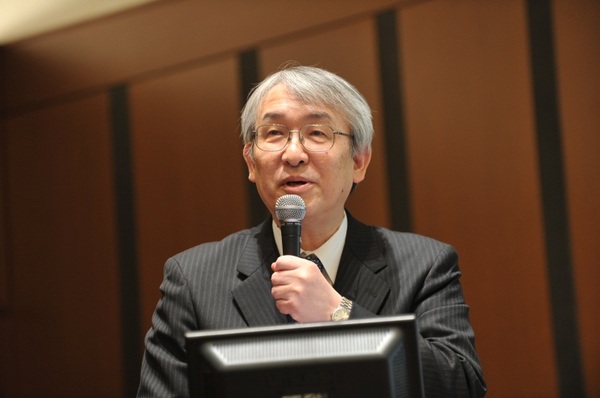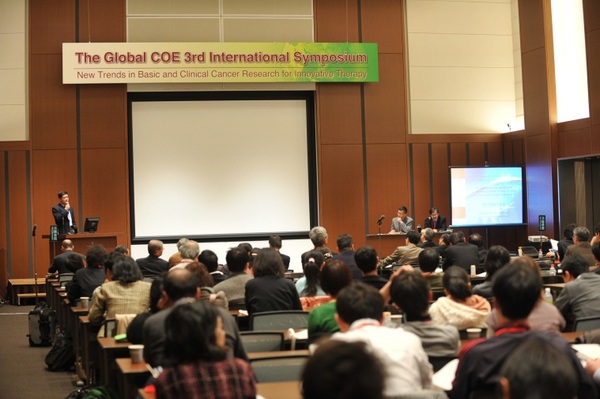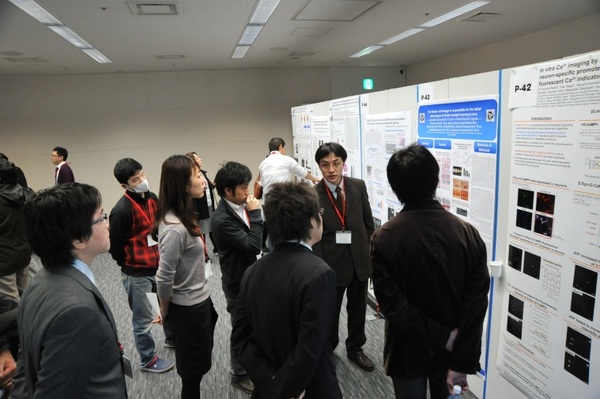Cancer is a serious and devastating disease and one of the ten leading causes of death worldwide. In Japan, cancer is one of the top three diseases affecting adults and a main cause of death. Due to this high morbidity and mortality, cancer research is highly important. Cancer is medically defined as a malignant tumor, which results in uncontrollable cell proliferation. Malignant tumors can metastasize and invade other normal tissues. As a result, a patient's body becomes weak, leading to death due to an increased expenditure of energy and defective functional activities. Therefore, there is a compelling need to develop effective cancer therapies. In order to identify and design cancer therapeutics, it is necessary to clarify the mechanisms that contribute to the growth and suppression of cancer cells and identify target molecules associated with this disease.
In order to solve this difficult problem and train young researchers to address these challenging topics, the GCOE program at Nagoya University entitled "Integrated Functional Molecular Medicine for Neuronal and Neoplastic Disorders" conducts world-leading researches and promotes educational programs that are supported by the Ministry of Education, Culture, Sports, Science and Technology of Japan. The third international symposium "New Trends in Basic and Clinical Cancer Research for Innovative Therapy" was designed to enhance research collaborations and internationalize young researchers within the GCOE program. At the symposium, cutting-edge achievements in cancer research field were presented by intra- and extra-mural world's leading researchers.
The symposium started with an opening remarks by Prof. Gen Sobue, the dean of the Graduate School of Medicine and the leader of the GCOE program, followed by oral presentations. From Nagoya University, Prof. Koichi Furukawa, Prof. Masahide Takahashi, and Assistant Prof. Naozumi Hashimoto lectured.
Prof. Furukawa gave a lecture on the "Regulatory mechanisms of malignant phenotypes of human cancers by glycosphingolipids". His research team has focused on the mechanisms by which gangliosides contribute to cancer cell proliferation. At his presentation, he showed that the ganglioside GD3 activates Yes, which is related to cancer cell growth and results in the adhesion of melanoma cells to collagens. In addition, he showed that GM1 can suppress Lewis lung cancer cells.
Prof. Takahashi presented the "Roles of the Akt substrate Girdin in cancer cell migration and angiogenesis". Akt is involved in biological signaling and contributes to various cellular activities such as proliferation. In previous studies, Akt was shown to be centrally involved in cancer cell proliferation. However, the mechanisms by which Akt is activated and enhances cancer are unknown. Prof. Takahashi and his co-researchers identified Girdin, which is activated by Akt. Furthermore, they depleted Girdin and showed that the absence of Girdin severely impairs cancer cell migration in some cancers. These achievements will contribute to the development of cancer drugs and therapies.
Assistant Prof. Hashimoto gave a talk on "The inhibitory effect of mutation of phosphorylation sites in the PTEN C-terminal tail against malignant phenotypes?Lung cancers and tissue microenvironment?". The tumor microenvironment surrounding cancer cells supplies energy to cancer cells and contributes to cancer growth. To understand the relationship between cancer cells and the tumor microenvironment, it is important to determine how the protein PTEN, which inhibits cancer, contributes to the tumor microenvironment. Assistant Prof. Hashimoto and his co-workers confirmed that PTEN critically contributes to the tumor microenvironment. Using human lung cancer cells, they demonstrated that PTEN has a critical role in suppressing lung cancer cells.
At the poster session, young researchers also presented their achievements. The symposium was attended by many young researchers and prompted many stimulating discussions.

Fig. 1. Opening address by Gen Sobue, the dean of the School of Medicine at Nagoya University

Fig. 2. Oral presentations

Fig. 3. Poster session